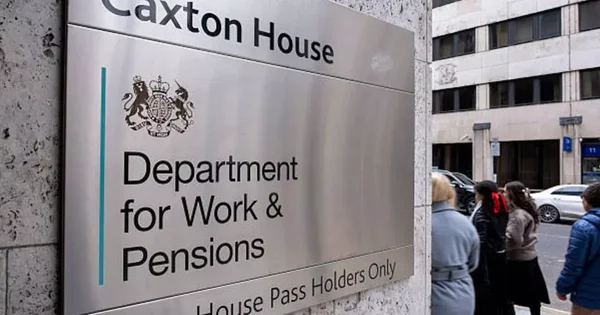Let's break it down!
Property purchases just got a bit more expensive for many buyers. The government has recently adjusted stamp duty rates, affecting how much tax you'll pay when buying a home.
Our tax specialists at Pie tax can help you navigate these complex stamp duty changes and potentially save thousands. Or if you're just here to get to grips with it all, let's break it down!
What is Stamp Duty and Why Has it Increased?
Stamp Duty Land Tax (SDLT) is the tax you pay when purchasing property in England and Northern Ireland. Similar taxes apply in Scotland and Wales under different names, but this article focuses on the UK SDLT system.
Recently, the government announced several changes to stamp duty thresholds and current stamp duty rates as part of broader taxation policy in the UK. These changes are intended to balance public finances and address the property market, impacting both standard buyers and first-time buyers.
The new stamp duty thresholds, which replaced the more generous pandemic-era rates, came into effect last autumn. These previous rates were designed to boost the housing market during Covid, but the current stamp duty rates now apply.

How the New Rates Affect Different Buyers
If you’re buying your first home, you’ll benefit from the higher threshold of £425,000 before you need to pay stamp duty. This could save you up to £11,250 compared to standard rates when you buy a house or residential property.
For home movers buying a single property as their main residence, the standard rates apply, with no stamp duty on the first £250,000. This still offers some relief on lower-priced properties.
Landlords, investors, and buyers of additional property are subject to extra tax in the form of a 3% surcharge on top of standard rates, increasing their SDLT liability. Owners of additional properties, such as buy-to-let or holiday homes, face these higher rates and must pay stamp duty even on the first £250,000 of the purchase price.
For a £400,000 house or residential property, a standard buyer would pay £7,500 in stamp duty. A landlord or investor would pay £19,500 for the same property quite the jump!
Sellers should also be aware that changes to stamp duty may impact the selling process and buyer demand.
Calculating Your Stamp Duty Bill
Stamp duty is calculated in slices, not on the entire purchase price. The amount of stamp duty payable depends on the property price and several factors, such as buyer status, property type (freehold or leasehold), and timing of the transaction. This is a common misunderstanding that can lead to unnecessary worry about crossing thresholds.
Different circumstances, such as whether the buyer is a UK resident or the type of property (freehold property or leasehold), can affect the calculation. For leasehold properties, stamp duty is calculated based on the lease premium and the terms of the lease, while for freehold property, it is based on the purchase price.
For example, on a £300,000 home, a standard buyer pays 0% on the first £250,000 and 5% on the remaining £50,000. This totals £2,500 in stamp duty.
The same property would cost a first-time buyer nothing in stamp duty, provided the relief is claimed. A landlord would pay £11,500 (3% on the first £250,000 plus 8% on the remaining £50,000).
I recently helped my sister calculate her stamp duty on a £375,000 flat purchase. As a first-time buyer, she paid nothing on the first £425,000, saving her £6,250 compared to standard rates.

Exemptions and Relief Options
First-time buyers relief remains the most significant saving opportunity and is available to eligible buyers, but it must be claimed at the time of purchase. This relief can potentially save you thousands compared to other buyers.
Multiple dwellings relief can reduce your bill if you’re an owner buying more than one property in a single transaction. It works by averaging the price across the properties, and applies to owners involved in qualifying transactions.
Not all buyers are subject to the same exemptions or reliefs eligibility depends on individual circumstances. For example, certain property transfers are exempt, such as those resulting from divorce or separation. Properties left in wills are also exempt from stamp duty.
If you’re buying a property with annexes or granny flats, you might qualify for multiple dwellings relief. This applies even when buying just one address.
Professional support can help you navigate the process of claiming reliefs and exemptions, ensuring you understand which options apply to your situation.
Smart Ways to Handle the Stamp Duty Increase
Timing your purchase around known stamp duty changes can save significant amounts. Buyers should aim to complete their purchase before April 2025 to benefit from current rates, as several changes to Stamp Duty Land Tax are expected to take effect after this date. Completing transactions before the deadline can save the same amount as the reduction in thresholds, making it crucial to plan when to buy. Keep an eye on budget announcements for future adjustments.
Consider the total cost of ownership rather than just focusing on the purchase price. Sometimes paying slightly more stamp duty for the right property makes financial sense long-term.
If you’re buying with a partner and one of you is a first-time buyer, explore potential benefits. Purchasing in the first-timer’s name might qualify for relief, though consider mortgage implications too. Be aware that the stamp duty increase may affect first-time buyers' ability to get onto the property ladder, so timing your purchase could be especially important.
Remember that stamp duty is not payable on removable fixtures and fittings. A clear breakdown in the purchase contract might reduce your taxable property value slightly.

Regional Variations Worth Knowing
The UK has different property tax systems in each region. Scotland uses the Land and Buildings Transaction Tax (LBTT) system with different thresholds and rates from England. It currently starts at 2% above £145,000.
Wales has its Land Transaction Tax (LTT), with no tax on properties up to £225,000 for main residences. Different rates apply thereafter.
Eligibility for certain rates and surcharges may depend on whether the buyer is a UK resident, as residential status can affect SDLT liabilities and exemptions.
If you’re considering a move near regional borders, comparing the different tax systems across the UK could save you money. An otherwise identical property might have very different tax implications.
Northern Ireland follows the same stamp duty system as England. HM Revenue collects stamp duty in England and Northern Ireland, and changes in thresholds or rates can directly impact government revenue from property transactions. The recent increases apply equally there.
Final Thoughts
Stamp duty increases are unwelcome but understanding the nuances can help you budget properly. Knowledge of the system might help you find potential savings.
The tiered system means crossing a threshold only affects the portion above that threshold. It doesn't impact your entire purchase price.
While the increases might seem steep, property remains a strong long-term investment for many. This is especially true with proper tax planning.
Getting professional advice before making offers can help you structure your purchase efficiently. A tax-efficient approach could save you thousands.

Pie tax: Simplifying Stamp Duty Tax
Navigating stamp duty doesn’t have to give you a headache. The UK’s first personal tax app, Pie tax, offers support for both buyers and sellers navigating stamp duty, providing clear guidance through the maze of property tax rules.
Our real-time calculators show exactly what you’ll owe based on your specific situation. We factor in all regional variations and potential reliefs you might qualify for.
Property tax planning is about more than just the purchase. Pie tax helps you understand the full tax picture, including potential future capital gains implications.
The Pie tax dashboard helps owners track their property transactions, portfolios, and potential tax liabilities in one place. You’ll have everything you need at your fingertips when it’s time to file returns.
Take a look at the Pie tax app if you’d like to see how much clearer property tax can be.









